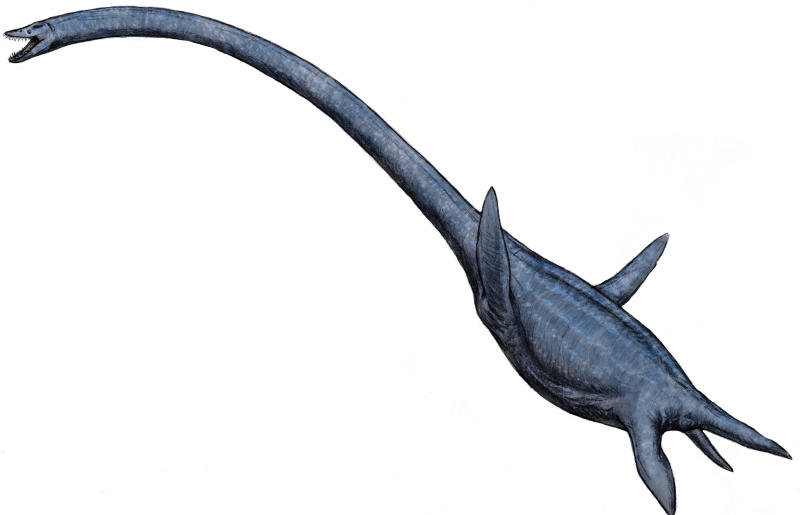In the early 1960s, palaeontologists exploring rural South Dakota unearthed the fossilised leg bone of a Hesperornis: a large aquatic bird rather like a penguin, which lived during the dinosaur era.
Hesperornis: They were large birds, up to 1.8 meters of length. They were characterized by the virtual absence of wings and legs with lobed feet . Hesperornis was therefore a flightless and mostly waterfowl. His method of locomotion was similar to loons, such as Common Loon, due to the shape of their hind legs and hips.
Plesiosauria:Typical plesiosaurs had wide body and short tail. They retained their ancestral two pairs of limbs that evolved in large aletas. The plesiosaurs evolved from remote nothosaurs, which had a crocodile-like body; the major types of plesiosaur are distinguished by the size of your head and neck.
According to scientists indicate the hesperornis was attacked by a bite plesiosaria by a fin tube but this could survive.
 This is Hesperornis
This is Hesperornis And this is Pleisosauria
And this is Pleisosaurialink:http://www.bbc.com/earth/story/20160311-how-a-bird-managed-to-escape-a-predatory-sea-monster
Cap comentari:
Publica un comentari a l'entrada